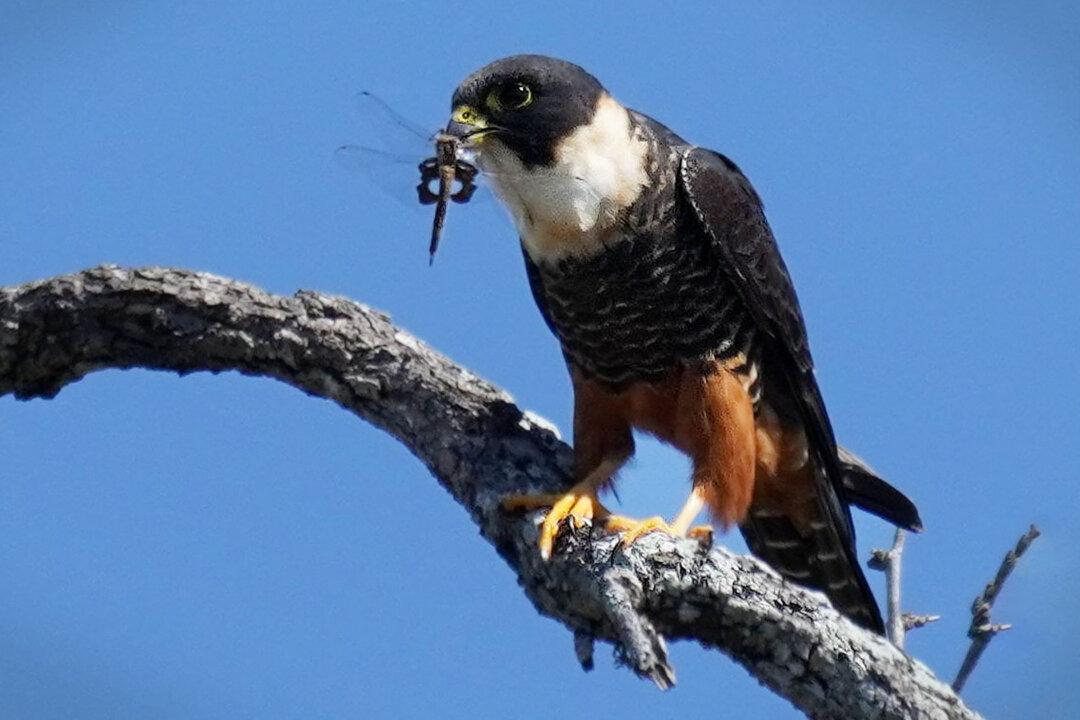A Texas couple traveled to the Santa Ana National Wildlife Refuge during the pandemic in search of a rare bird that had been sighted making its first-ever appearance in the United States—the bat falcon.
This tropical species typically inhabits Mexico, Central and South America, and Trinidad. But in late November 2021, the falcon was spotted north of the border for the first time, at the sanctuary in Alamo, Texas.






